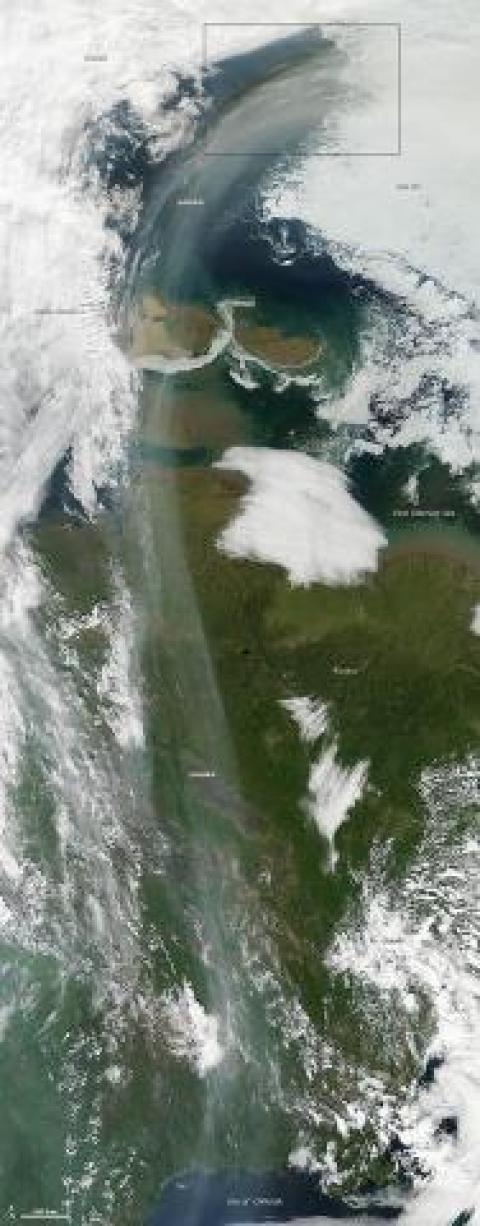Northern Eurasia covers 20% of the global land mass and contains 70% of the boreal forest. During certain times of the year, black carbon (BC) in smoke plumes in high latitudes may be transported and deposited on Arctic ice and accelerate ice melting. It is thus imperative to better understand daily sources, transport, and deposition of BC in Northern Eurasia.
We examined daily BC emissions from fires over different land cover types in Northern Eurasia at a 500 m x 500 m resolution from 2002 to 2015. Annual BC emissions from fires varied enormously from 0.39 Tg (1 Tg = 109g) in 2010 to 1.8 Tg in 2003 with an average of 0.7 Tg. BC emissions were dominated by forest fires which accounted for about two-thirds of the emissions, followed by grassland fires (18%). Overall, Russia contributed 80% of the total BC emissions from fires in Northern Eurasia.
Our dataset has been used for studying the transport and deposition of BC on the Arctic from 2002–2013. The study found that approximately 8.2% of the BC emitted by Northern Eurasian fires was deposited on the Arctic ice during the period of 2002–2013, accounting for 45%–78% of the BC deposition from all the sources. About 42% of the BC emitted during spring and summer was deposited on Arctic ice, which is the most effective period for acceleration of ice and snow melting.
These results are critical in understanding the future impacts of climate change on the fire dynamics in Northern Eurasia and the contribution of black carbon to accelerated melting of Arctic ice.
